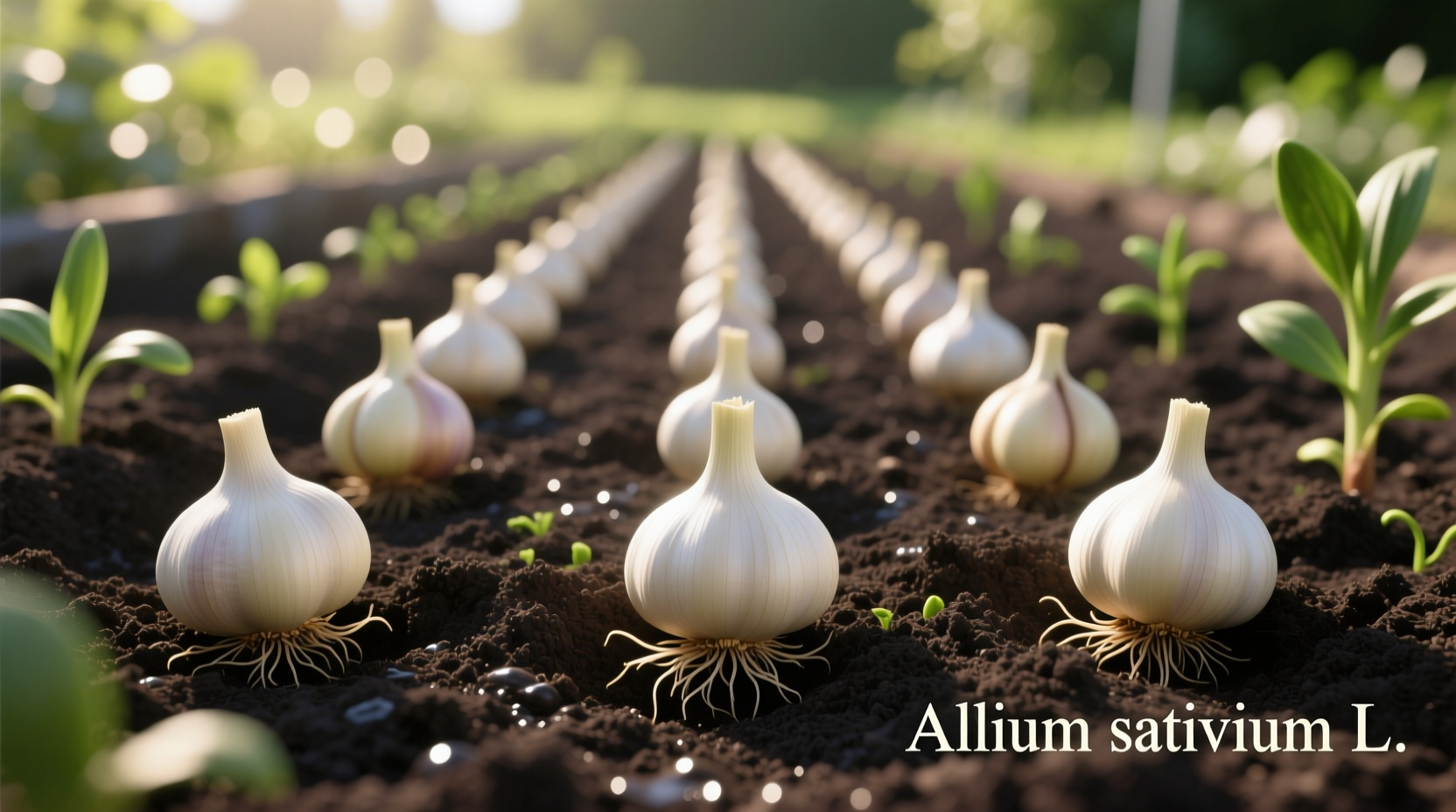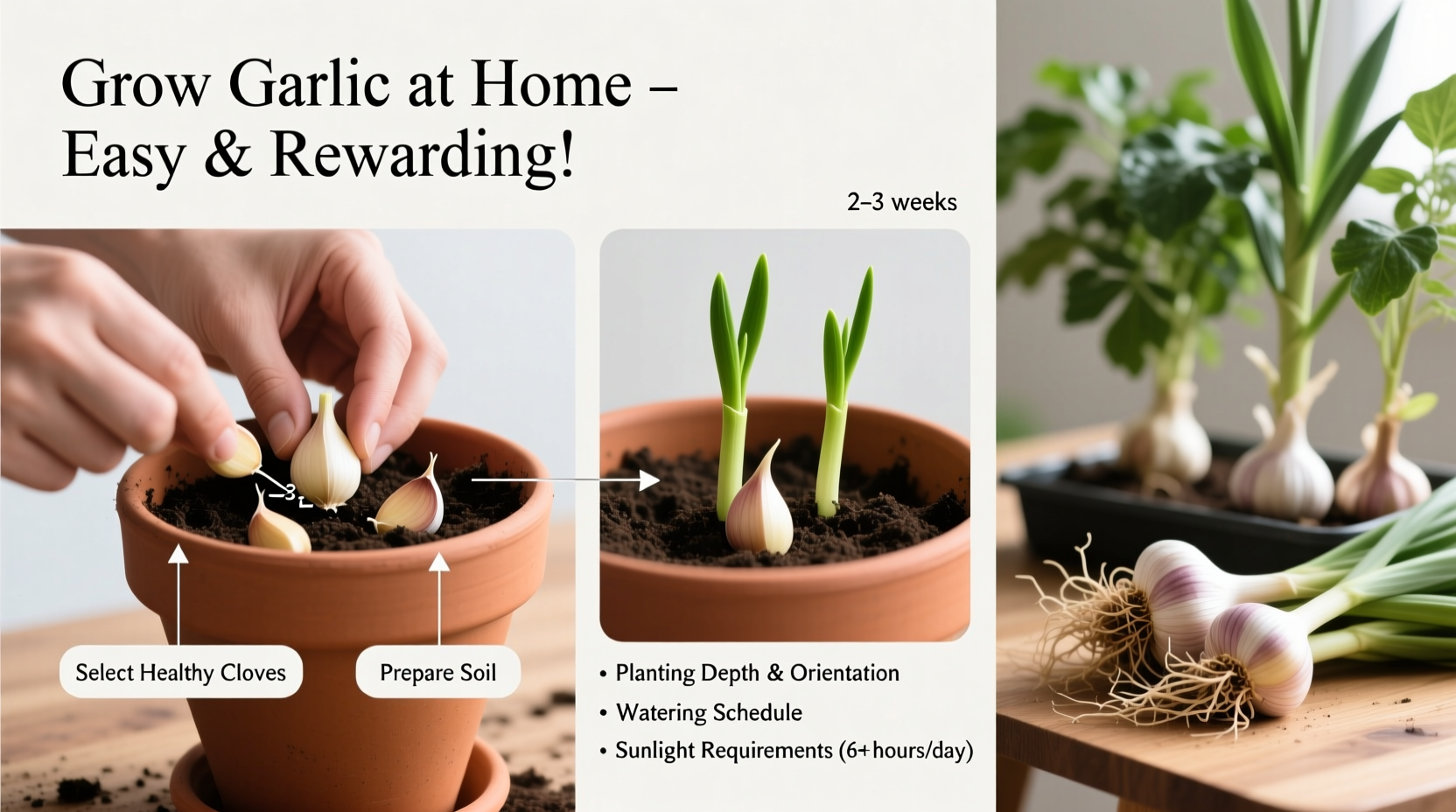Why Grow Your Own Garlic?
Homegrown garlic offers superior flavor and freshness compared to store-bought options. When you grow garlic at home, you control what goes into your soil and avoid pesticides. Plus, it's surprisingly easy to cultivate even in small spaces—whether you have a backyard garden, raised beds, or just a sunny patio. Many gardeners find growing garlic at home requires minimal maintenance once established, making it perfect for beginners.
Planning Your Garlic Growing Project
Before you start growing garlic at home, consider these essential planning factors that determine your success.
Choosing the Right Garlic Variety
Not all garlic is created equal. For home gardeners, these two main types work best:
| Garlic Type | Best For | Cold Hardiness | Storage Life |
|---|---|---|---|
| Hardneck | Cooler climates, distinctive flavor | High (tolerates -20°F) | 5-7 months |
| Softneck | Warmer climates, braiding | Moderate | 9-12 months |
According to the University of Minnesota Extension, hardneck varieties generally perform better in northern regions while softnecks thrive in southern climates. Elephant garlic isn't true garlic but a leek relative with milder flavor—perfect if you prefer less pungency when growing garlic at home.
Timing Your Planting
The optimal time for growing garlic at home depends on your climate zone:
- Cold climates (Zones 3-5): Plant in early fall (September-October) before ground freezes
- Moderate climates (Zones 6-8): Plant in mid-fall (October-November)
- Warm climates (Zones 9-10): Plant in late fall (November-December) or early winter
Fall planting gives garlic time to develop roots before winter dormancy, resulting in larger bulbs come harvest time. Spring planting works but typically yields smaller bulbs when growing garlic at home.
Step-by-Step Guide to Planting Garlic
Follow these practical steps for successful garlic cultivation in your home garden.
Preparing Your Soil
Garlic thrives in loose, well-draining soil rich in organic matter. Before planting garlic at home:
- Clear the planting area of weeds and debris
- Amend soil with 2-3 inches of compost or well-rotted manure
- Ensure soil pH between 6.0-7.5 (test with kit from garden center)
- Create raised beds if drainage is poor (6-8 inches high)
Proper soil preparation when growing garlic at home prevents bulb rot and encourages healthy development. The Oregon State University Extension recommends avoiding fresh manure as it can cause disease issues.
Planting Your Garlic Cloves
This is the most critical step in growing garlic at home:
- Separate garlic bulbs into individual cloves 1-2 days before planting
- Select the largest, healthiest cloves for planting (save smaller ones for cooking)
- Plant cloves pointy-end up, 2-3 inches deep in soil
- Space cloves 4-6 inches apart in rows 12-18 inches apart
- Cover with soil and apply 2-4 inches of mulch (straw or leaves)

"Planting depth is crucial when growing garlic at home," notes agricultural research from Cornell University. "Too shallow and cloves may dry out; too deep and sprouts struggle to emerge."
Caring for Your Garlic Plants
Once established, growing garlic at home requires minimal maintenance, but proper care ensures optimal bulb development.
Watering Requirements
Garlic needs consistent moisture but hates soggy soil. Follow this watering schedule when growing garlic at home:
- Fall planting: Water after planting, then only during extended dry periods
- Early spring: Water 1 inch per week as plants actively grow
- 6 weeks before harvest: Gradually reduce watering to prepare for harvest
Overwatering causes root rot, while underwatering produces small bulbs. The Utah State University Extension recommends using drip irrigation for growing garlic at home to maintain consistent soil moisture.
Fertilizing for Maximum Growth
Feed your garlic plants at these key stages:
- When shoots emerge in spring: Apply balanced organic fertilizer (10-10-10)
- 6 weeks later: Side-dress with nitrogen-rich fertilizer (blood meal or fish emulsion)
- Stop fertilizing 4 weeks before harvest to prevent excessive foliage growth
Managing Pests and Diseases
When growing garlic at home, watch for these common issues:
- White rot: Yellowing leaves, white fungal growth on bulbs (remove affected plants)
- Nematodes: Stunted growth, yellow leaves (rotate crops, solarize soil)
- Onion maggots: Tunneling in bulbs (use row covers, rotate crops)
Prevent problems by rotating garlic to a new location each year and avoiding planting in soil where onions or related plants grew recently. The USDA notes that healthy soil with proper drainage significantly reduces disease risk when growing garlic at home.
Harvesting and Storing Your Homegrown Garlic
Timing your harvest correctly makes all the difference in growing garlic at home.
When to Harvest
Harvest garlic when:
- Lower 1/3 of leaves turn brown (top 2/3 remain green)
- Bulb wrappers feel dry and papery
- Individual cloves are distinct and plump
Harvesting too early yields small bulbs; too late causes cloves to separate. For most home gardeners growing garlic at home, this occurs between late June and August depending on planting date and climate.
Proper Curing Process
Curing preserves your harvest when growing garlic at home:
- Gently dig bulbs with garden fork (avoid pulling by stems)
- Brush off excess soil (don't wash)
- Hang in dry, shaded, well-ventilated area for 2-3 weeks
- Bulbs are cured when necks are dry and papery, roots are brittle
Storage Methods for Longevity
Store cured garlic properly to enjoy your homegrown harvest:
- Keep in mesh bags or open baskets
- Maintain temperature between 55-65°F (13-18°C)
- Ensure humidity around 60-70%
- Check monthly for sprouting or soft spots
Properly stored garlic from your home garden typically lasts 6-12 months. Softneck varieties generally store longer than hardnecks when growing garlic at home.
Troubleshooting Common Garlic Growing Problems
Even experienced gardeners encounter issues when growing garlic at home. Here's how to solve them:
Small Bulb Development
Causes: Late planting, poor soil nutrition, overcrowding, insufficient sunlight
Solutions: Plant earlier in fall, amend soil with compost, space cloves properly, ensure 6+ hours of sun
Yellowing Leaves
Causes: Overwatering, nitrogen deficiency, fungal disease
Solutions: Adjust watering schedule, apply balanced fertilizer, remove affected plants
Garlic Not Forming Bulbs
Causes: Insufficient cold period (for hardnecks), wrong variety for climate
Solutions: Choose appropriate variety, ensure proper fall planting timing
Maximizing Your Home Garlic Garden
Once you've mastered the basics of growing garlic at home, try these advanced techniques:
- Save your largest bulbs for next year's planting stock
- Grow garlic in containers with 8+ inch depth for patios or small spaces
- Plant companion crops like carrots or lettuce between garlic rows
- Use garlic scapes (flower stalks from hardnecks) in cooking for mild garlic flavor
"Gardeners who consistently succeed at growing garlic at home follow three principles," explains research from the National Gardening Association: "proper timing, soil preparation, and patience during curing."











 浙公网安备
33010002000092号
浙公网安备
33010002000092号 浙B2-20120091-4
浙B2-20120091-4